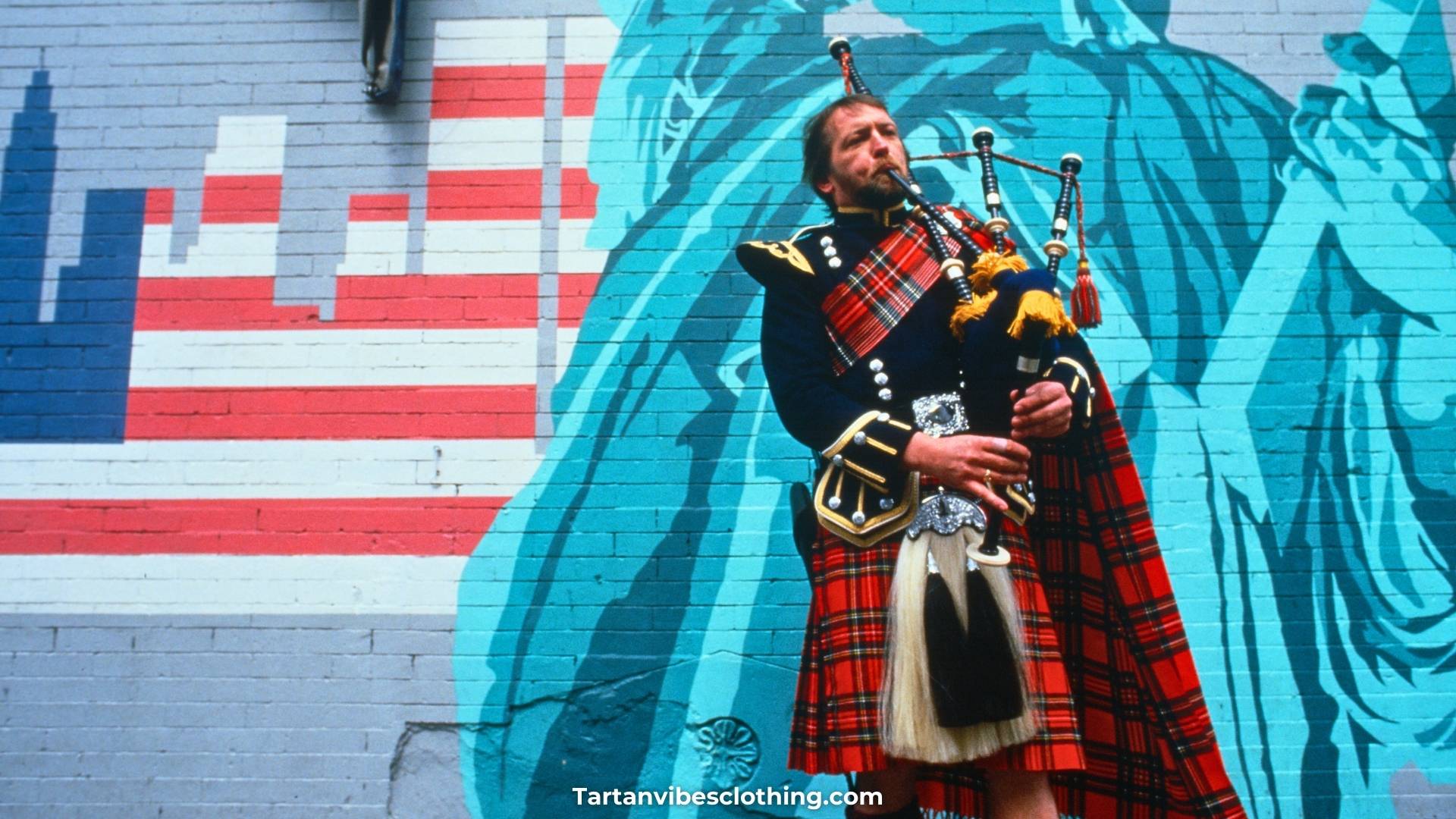Table of Content
Every April, we get the chance to pause, reflect, and celebrate a heritage that’s deeply interwoven into the fabric of the United States—Scottish American heritage. Whether you’ve got a tartan hanging in your closet, a family story that begins in the Highlands, or just a fascination with bagpipes and Braveheart, Scottish American Heritage Month invites us all to honor the remarkable influence of Scottish Americans in shaping the nation we call home.
Just like Black History Month in February or Asian American and Pacific Islander Heritage Month in May, this observance gives us space to reconnect with history, share stories, and proudly carry forward ancestral traditions.
Let’s explore the rich tapestry of history, tradition, and modern-day celebrations that make April such a powerful month of remembrance and pride.
What is Scottish American Heritage Month?
Origins and Purpose of the Observance
Why It’s Celebrated in April
April was chosen as the designated month in part due to the historical significance of Tartan Day on April 6th, which commemorates the signing of the Declaration of Arbroath in 1320—a bold declaration of Scotland's independence that later inspired American ideals of liberty. The entire month allows for a broader celebration across the country through festivals, education, and ancestral reconnection.

A Look Back: The History of Scottish Immigration to America
Early Scottish Settlers and Their Motivations
Scottish immigration to America began as early as the 1600s when men and women fleeing religious persecution, poverty, and political unrest sought refuge and opportunity in the New World. Some came willingly, while others were forced—indentured servants or political prisoners sent to America under British law. Regardless of how they arrived, they brought with them resilience, innovation, and a cultural richness that deeply influenced colonial society.
One of the first Scots in America may have been Robert Sproat, who reportedly sailed aboard the Mayflower in 1620—planting Scottish roots in America right from the very start.

The Scots-Irish Movement and Its Significance
Scottish Contributions to Early American Society
The Role of Scottish Americans in U.S. Independence
Did you know that nearly 34 out of 45 U.S. presidents have had some Scottish or Scots-Irish heritage? From George Washington to Barack Obama, the Scottish lineage in leadership is undeniable. Even the Declaration of Independence was partially inspired by the Scottish Declaration of Arbroath. Scottish Americans didn’t just dream of liberty—they fought for it, filling the ranks of the Continental Army and shaping early American governance.

Influence on American Culture and Infrastructure
Scottish Americans left their fingerprints all over early American development. From the steel empire of Andrew Carnegie to the telephone—patented on March 7th, 1876 by Scottish-born inventor Alexander Graham Bell —Scottish ingenuity and work ethic powered the Industrial Revolution and modern communication. Bell’s groundbreaking invention not only transformed global communication but also paved the way for a series of technological advances that followed.

Even cities like Jamestown, named after Scotland's King James VI, reflect Scottish influence from the very beginning.
And believe it or not, even Uncle Sam, the iconic symbol of American patriotism, is believed to have Scottish roots. His real-life counterpart, Samuel Wilson, a meat supplier for the U.S. Army during the War of 1812, was the son of Scottish immigrants.

Scotland’s Cultural Footprint in the U.S.
Tartan Day: Honoring Heritage on April 6th
Tartan Day is the heart of Scottish American Heritage Month, celebrated annually on April 6th. This day honors not just the Declaration of Arbroath but the enduring contributions of Scottish Americans. Parades, pipe bands, and cultural exhibitions fill cities like New York, San Diego, and Chicago with the sights and sounds of Scotland.
Highland Games and Ceilidh Traditions in America
If you’ve never seen a man toss a 16-foot log (aka a caber), you’re missing out. The Highland Games, held in various states throughout April, are physical, musical, and culinary celebrations of Scottish tradition. You’ll find Ceilidh dances (pronounced "kay-lee"), traditional foods like haggis and clootie dumplings, and kilts galore.
And don’t forget about First Footing, a New Year’s tradition in Scotland that has made its way into some American homes—where the first guest through your door after midnight brings good luck, especially if they come bearing coal, shortbread, or whisky.

Notable Scottish Americans Who Shaped History
Political Leaders and U.S. Presidents
Beyond the White House, Scottish Americans have impacted nearly every facet of politics and public service. Think Alexander Hamilton, the nation's first Secretary of the Treasury, or General Colin Powell, whose Scottish ancestry enriched a long military and diplomatic career. It’s a legacy of leadership, resilience, and visionary thinking.
According to the U.S. Census in 2020, 5.3 million Americans claimed Scottish ancestry, and approximately 3 million more identified as Scots-Irish. That means millions of Americans today carry on this legacy—whether they know it or not.

Inventors, Artists, and Entertainers
Scottish roots have influenced icons like:
Elvis Presley, whose ancestors hailed from Aberdeenshire.
Johnny Cash, a descendant of Fife.
John Muir, the father of American conservation.
Julia Roberts, Rachel Ray, and William Faulkner.
W.K. Kellogg, the cereal magnate.
Davidson brothers of Harley-Davidson Motorcycles, the sons of Scottish immigrants.
Even storytellers like Edgar Allan Poe, whose The Raven still echoes in classrooms today, and Washington Irving, whose Legend of Sleepy Hollow is part of the Scottish storytelling legacy.
Even the journey to the stars has Scottish fingerprints on it— Neil Armstrong and Buzz Aldrin, the first men on the moon, were of Scottish descent. Their legacy is a testament to just how far the Scottish-American spirit has soared—literally out of this world!
Exploring Your Roots: Genealogy and Ancestral Connection
How to Trace Scottish Ancestry
Using Online Tools like ScotlandsPeople and the National Archives
The Four Keys to Ancestral Reconnection
Food, Land, Tradition, and Myth as Cultural Anchors
These “four sacred keys” to reconnecting with our ancestors are more than just symbolic—they're practical, powerful tools for understanding who we are:
Food: Try baking shortbread, making Scotch eggs, or oatmeal the Scottish way.
Land: Learn about native Scottish plants, or even plant a thistle in your garden.
Tradition: Set up a family altar for April with heirlooms, photos, and tartan cloth.
Myth: Read Scottish folklore to your kids or tune into a storytelling podcast.

Personal Journeys and Community Reflections
Ways to Celebrate Scottish American Heritage Month
Attend Festivals, Cook Traditional Foods, Learn Gaelic
Here are some fun and meaningful ways to celebrate:
Attend a local Scottish festival or Highland Games.
Try learning basic Scottish Gaelic phrases with apps like Duolingo.
Cook a traditional Scottish meal and share it with family.
Explore online museums and heritage organizations.
Share your ancestry journey on social media using #ScottishAmericanHeritageMonth.

Virtual Tours, Volunteering, and Sharing Stories
If you can’t travel, explore virtual tours of places like Edinburgh Castle, the Scottish Tartan Museum, or the National Museum of Scotland. Many of these experiences are free and full of interactive content. You can also:
Donate to organizations like Scottish Heritage U.S.A. (SHUSA) or the American-Scottish Foundation.
Volunteer for heritage festivals or community events in your city.
Support Scottish authors, musicians, and small businesses.
Share stories about your heritage, whether through social media, family gatherings, or local storytelling circles.
Every action—big or small—helps keep Scottish culture alive and thriving in the U.S.
The Enduring Impact of Scottish American Culture

Contributions to U.S. Society and Modern Identity
From rugged frontiersmen to presidents, poets, inventors, and astronauts, the impact of Scottish Americans is immense. Their legacy lives on not just in historical records but in the values, industries, and traditions that define the American experience.
We can hear it in the twang of country music, feel it in the grain of steel, and see it in the tartan patterns passed down through generations.
Passing on Heritage to Future Generations
Your heritage isn’t just about where you came from—it’s also about what you pass on. Whether it’s teaching your children to dance the Highland fling, reciting Scottish poetry at a family dinner, or planting a thistle in your garden, these traditions ground us in something timeless.
By preserving language, celebrating folklore, and honoring ancestral rituals, we ensure that the rich story of Scottish Americans continues far into the future.
Final Thoughts: Embracing the Legacy
Frequently Asked Questions
Is there a Scottish American Heritage Month?
Each April, Scottish-American Heritage Month highlights Scottish heritage and remembers the Scottish-Americans who have had an impact on U.S. society. The influence of Scottish ancestry is woven deeply into the fabric of America. Many of the founding fathers of our country were of Scottish ancestry.
What US state has the most Scottish heritage?
Scottish Populations in the United States
- California: Home to 456,714 Scottish-descendent citizens, California boasts the largest number of Scottish Americans. ...
- Texas: With 375,541 residents claiming Scottish heritage.
- Florida: Florida has a Scottish population of between 200,000 and 300,000.
What is a Scottish American called?
Scottish Americans or Scots Americans (Scottish Gaelic: Ameireaganaich Albannach; Scots: Scots-American) are Americans whose ancestry originates wholly or partly in Scotland
Why is Scottish American Heritage Month celebrated in April?
It aligns with Tartan Day on April 6th, commemorating the Declaration of Arbroath and celebrating Scottish contributions to U.S. society.
Can I celebrate even if I’m not of Scottish descent?
Absolutely! Scottish American Heritage Month is about learning, celebrating, and sharing. Everyone is welcome to honor and enjoy the culture.











